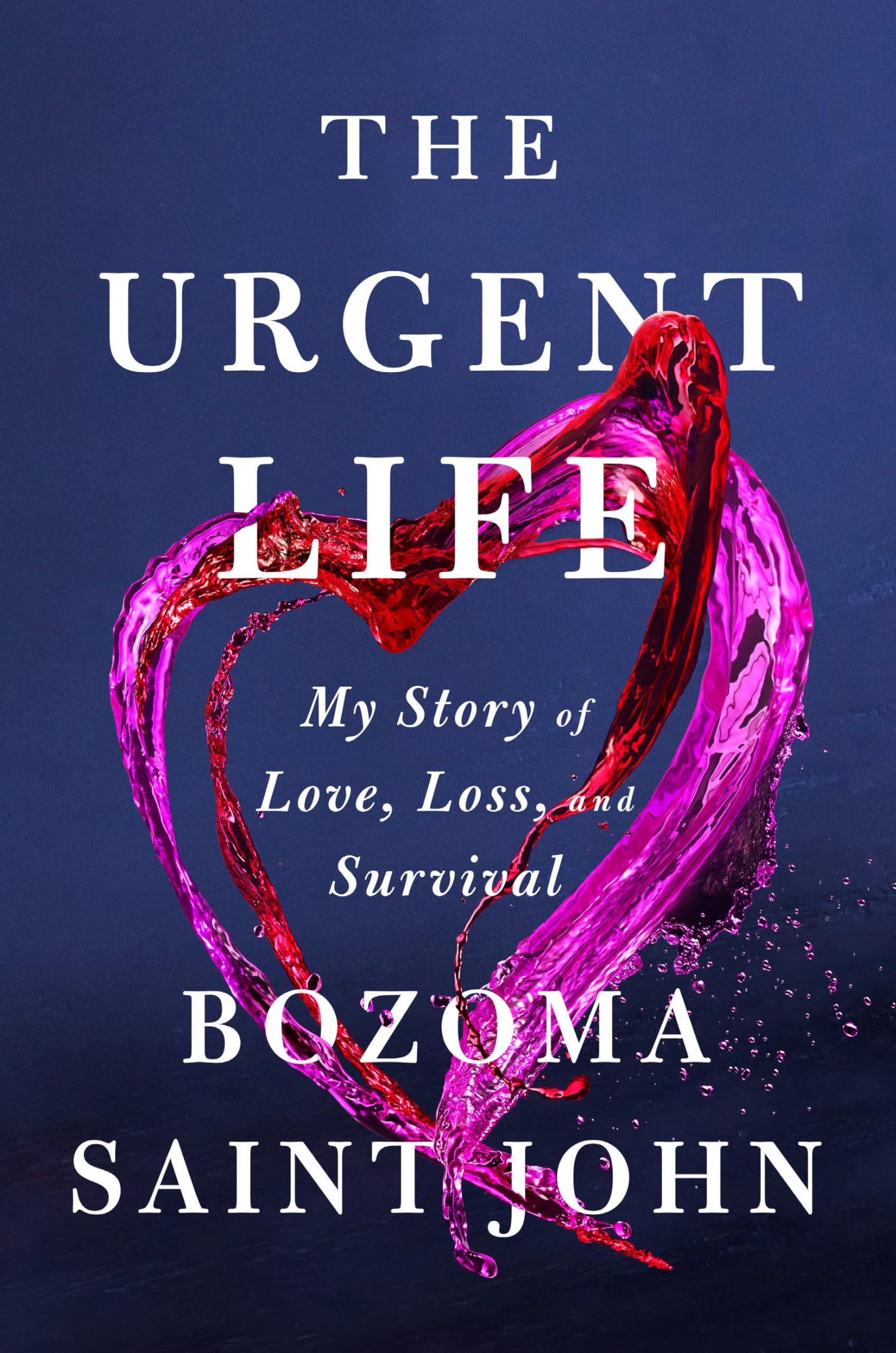Culture
Go where your heart leads you for now.
Some of our Favourites
We’re living in the age of “just being honest”, vulnerability is a marketing strategy, and trauma dumps are passed off as transparency.
And where the algorithm rewards messiness until it doesn’t.
But here’s the truth: authenticity vs oversharing online is a line too many folks are crossing. And it’s hurting their business, their audience, and their own nervous systems.

Read More

Authenticity vs. oversharing online: where do we draw the line? We’re living in the age of “just being honest”, vulnerability is a marketing strategy, and trauma dumps are passed off as transparency.
And where the algorithm rewards messiness until it doesn’t.
But here’s the truth: authenticity vs oversharing online is a line too many folks are crossing. And it’s hurting their business, their audience, and their own nervous systems.
When “Being Real” Becomes a Red Flag
Oversharing often looks like:
- Sharing raw trauma with no processing
- Turning every challenge into “content”
- Putting your audience in the position of therapist
- Constantly leading with chaos instead of clarity
You’re allowed to be human. But if your content always leaves people feeling emotionally heavy, confused, or unsure about what you do, that’s not resonance. That’s noise.
Authenticity Is a Strategy—Not a Stream of Consciousness
The most powerful online brands are authentic with intention, share from scars, not open wounds, and teach through lived experience, not live breakdowns.
- These brands know their role: not to trauma bond, but to guide
- They set boundaries around what’s sacred
- Sometimes, they share what supports connection—not confusion
How to Stay Real Without Oversharing
Ask yourself:
- Am I sharing this to connect or to self-soothe?
- Is this processed or still bleeding?
- Will my audience leave this post clearer—or heavier?
Vulnerability is powerful, but when you weaponize it for likes or empathy, it backfires. Every time. You don’t want to end up looking like another MLM scammer.
Boundaries Are Branding
Your story is yours. You don’t owe the internet your most intimate details to be taken seriously.
If it matters, you can show up real, raw, and responsible. You can inspire without exposing and be honest without handing out your unfiltered life like it’s a press release.
Because authenticity vs oversharing online is not just a content decision, it’s a leadership one.
Need support figuring out what parts of your story actually serve your business? Let’s map your messaging with clarity and care.

Read More
My question for the masses these days is… Is the soft life era real self-care or just avoiding growth?
There’s a collective craving happening right now and it’s soft. Soft mornings. Clear boundaries. Cool launches. Simple living. The “soft life” promises ease, luxury, and peace. And after years of burnout culture, it makes sense we all want gentleness.

Read More

My question for the masses these days is… Is the soft life era real self-care or just avoiding growth?
There’s a collective craving happening right now and it’s soft. Soft mornings. Clear boundaries. Cool launches. Simple living. The “soft life” promises ease, luxury, and peace. And after years of burnout culture, it makes sense we all want gentleness.
But here’s the question nobody’s asking:
Is your soft life rooted in healing or hiding?
Because there’s a difference between resting and retreating. Between choosing ease and avoiding expansion. And in this era of curated self-care, we need to talk about the tension between soft life and self-growth.
When Softness Becomes a Disguise for Stagnation
Rest is necessary. Burnout is real. But not every nap is nourishing. Not every “boundary” is brave.
Sometimes we’re using softness as an escape hatch:
- Avoiding uncomfortable conversations
- Procrastinating on purpose
- Shrinking from discomfort and calling it “alignment”
In those moments, the soft life becomes performative. It looks peaceful but feels unfulfilling.
What the Real Soft Life Looks Like
Soft doesn’t mean still. It means sustainable. Intentional. Boundaried. Wise.
A real soft life includes hard things:
- Saying no with grace
- Doing deep healing work
- Choosing slowness without self-sabotage
- Allowing discomfort in the name of growth
The soft life isn’t a reason to stop showing up for yourself. It’s the foundation that helps you do it without burning out.
So… Is It Self-Care or Avoidance?
Ask yourself:
- Am I resting to restore, or hiding from responsibility?
- Does this softness feel grounding—or numbing?
- Am I avoiding growth and calling it “peace”?
If you feel called out…good. That’s your clarity knocking. Because the real flex is building a soft life that still stretches you.
You Deserve Ease and Expansion
Sometimes, you don’t have to choose between softness and strength and you absolutely don’t have to grind to grow.
But you also don’t have to use “ease” as an excuse to avoid evolution. This isn’t about hustle. It’s about honesty.
So give yourself the luxury of rest, but also the courage to rise. Because soft life and self-growth? They’re not opposites. They’re teammates. Check out my blog post on life not being a checklist and living a full life doesn’t always look soft.
Feeling stuck between softness and growth? Let’s find the clarity in your season… shame, no rush.

Read More
Titling this blog post “Influencer Culture vs. Real Business: Why The Line is Blurry” might get me some side eyes and that’s okay. Instagram used to be about food pics and selfies. Now? It’s a marketplace of perfectly lit “personal brands” hawking alignment, seven-figure promises, and a Pinterest-worthy lifestyle. And somewhere along the way, the […]

Read More

Titling this blog post “Influencer Culture vs. Real Business: Why The Line is Blurry” might get me some side eyes and that’s okay. Instagram used to be about food pics and selfies. Now? It’s a marketplace of perfectly lit “personal brands” hawking alignment, seven-figure promises, and a Pinterest-worthy lifestyle. And somewhere along the way, the line became blurred.
Here’s the problem: having influence doesn’t always mean having impact.
And too many entrepreneurs are getting stuck trying to be seen instead of being of service.
The Rise of the Influencer-Entrepreneur Hybrid
There’s nothing wrong with content creation or building a strong brand. But the obsession with likes, virality, and follower count has shifted the focus from sustainability to spectacle.
We now have:
- Coaches who coach coaches how to coach
- Creators offering $997 “blueprint bundles” with no results
- More time spent making aesthetic carousels than delivering client results
It’s the performance of business with no real foundation.
Why This Hurts Actual Entrepreneurs
Real business is built on:
Consistency
Repeatable systems
Deep client transformation
A damn good offer
But influencer culture says:
“Post more to be seen.”
“You just need to monetize your personality.”
“If you’re not visible, you’re not valuable.”
This creates a toxic cycle where creatives feel like if they’re not constantly online, they’re irrelevant.
Spoiler: irrelevance ≠ invisibility. Being quieter doesn’t mean you’re less powerful. It means you’re busy doing the work.
What to Do Instead: Build for Longevity, Not Likes
If you’re tired of the pressure to perform, here’s what to focus on instead:
- Know your actual offer. It’s not your IG aesthetic, the engagement, or even the transformation.
- Serve first, sell second. People remember how you helped them, not how clever your captions were.
- Create content rooted in value, not vanity. Educational, transparent, client-centered content always outlasts the viral fluff.
- Stop chasing algorithmic approval. Start building trust with your email list, client referrals, and actual service.
Final Word: Influence is fleeting. Integrity isn’t.
If you’ve been feeling like you have to become an influencer to be taken seriously…pause. You’re not here to entertain. Your gifts are here to serve.
Let the creators create and maybe we can let the clout-chasers chase. But you? You build something that lasts.
Because influencer culture vs real business doesn’t have to be a war. But it is a choice.
Ready to build a business rooted in trust, clarity, and long-term impact?
Let’s map your next move, no blue check required. Book your Clarity Session
PS: Check out my blog post about the coaching space these days are giving MLM. You might like that one!

Read More
There’s a quiet panic happening in the coaching and online business world.
You can see it in the launches with no buyers.
You can feel it in the DMs that feel more like cold calls.
You can hear it in the constant, desperate pitches:
“Join my high-ticket mastermind before prices go up again!”
And if you’ve been paying attention, it all feels eerily familiar.
That’s because MLM culture in online business is thriving—and it’s becoming a serious problem.

Read More

There’s a quiet panic happening in the coaching and online business world and it’s feeling like MLM culture in the coaching space.
You can see it in the launches with no buyers. You sometimes can feel it in the DMs that feel more like cold calls and unanswered messages. There are times you can hear it in the constant, desperate pitches:
“Join my high-ticket mastermind before prices go up again!”
And if you’ve been paying attention, it all feels eerily familiar.
That’s because MLM culture in the coaching space is thriving—and it’s becoming a serious problem.
The Rise of the Online “Coachfluencer”
At first glance, everything looks polished:
- Airy branding
- Luxury lifestyle photos
- $10K months (allegedly)
- Confidence oozing from every carousel
But scratch the surface and you’ll find the same structure that’s plagued MLMs for decades:
- High-ticket upsells with low-value returns
- Endless recruitment (“Get rich by selling what I sell!”)
- A hierarchy of hype, not results
The difference? Online entrepreneurs are dressing it up in empowerment language and manifestation glitter. And people are falling for it.
Why This Hurts Everyone—Especially Ethical Creatives
When people feel burned by scammy sales tactics, they start distrusting all service providers.
Even the good ones. Even you.
This damages client trust, waters down the industry, and silences ethical voices who don’t play the performance game.
You shouldn’t have to share your trauma on a livestream or pretend you’re a millionaire to book clients.
You also shouldn’t need a $25K “VIP Day” to feel valid.
Being told “you’re not investing in me, you’re investing in yourself” when you’re clearly being manipulated is a f*cked up ploy.
What to Do Instead: Build With Integrity, Not Illusion
If you’re done with the performance and ready to build a business that actually feels good, here’s your next move:
- Lead with transparency. Show your process. Name your prices. Don’t fake numbers for credibility.
- Center transformation over transaction. What are you actually helping people do? Say that. Clearly.
- Respect your audience’s intelligence. They don’t need pressure. They need clarity, boundaries, and space to decide.
- Be okay growing slower. Fast doesn’t mean sustainable. Big doesn’t mean ethical. Your pace is not your worth.
The Industry Isn’t Dead—But It Needs a Detox
MLM culture in the coaching space is getting louder, flashier, and more harmful. But that’s exactly why ethical, thoughtful, real entrepreneurs like you need to speak louder.
Not with judgment. With honesty.
Not with shame. With transparency.
Not with scarcity. With service.
Because what we build together matters more than what we sell today.
If you’re building a human-first brand and want strategy that actually aligns with your ethics?
Let’s map that with clarity. Check out our options and book a clarity session and let’s figure it out!

Read More
The Rise & Fall of Hustle Culture For years, hustle culture dominated the entrepreneurial world… But now, the anti-hustle movement is rising. The truth? Hustle culture is dead—but that doesn’t mean you should be lazy. The real key? Finding a sustainable approach to success that balances ambition with well-being. Let’s break it down. What Was Hustle Culture, […]

Read More

The Rise & Fall of Hustle Culture
For years, hustle culture dominated the entrepreneurial world… But now, the anti-hustle movement is rising. The truth? Hustle culture is dead—but that doesn’t mean you should be lazy.
The real key? Finding a sustainable approach to success that balances ambition with well-being. Let’s break it down.
What Was Hustle Culture, and Why Did It Die?
Hustle culture thrived on the belief that success required sacrificing sleep, relationships, and personal well-being. You weren’t considered “serious” about your business unless you were constantly “grinding.”
🔹 The Problem: It glorified burnout, creating a toxic cycle where rest was seen as weakness.
🔹 The Shift: People realized that working harder doesn’t always mean working smarter. Mental health, creativity, and overall well-being took a hit.
As more people rejected the “always-on” mentality, the anti-hustle movement gained traction, promoting ease, balance, and sustainability in business.

The Problem with the Anti-Hustle Movement
While the anti-hustle movement introduced much-needed balance, some people are using it as an excuse for inaction.
What’s Good: It teaches boundaries, prioritizing well-being over burnout.
What’s Not: Some interpret it as a reason to avoid challenges, effort, or discipline.
Here’s the truth—sustainable success still requires work. The key is intentional effort rather than overworking yourself into exhaustion.

Balancing Ambition with Sustainability
So how do you stay driven without falling into the extremes of hustle culture or complacency? Here’s the blueprint:
1. Redefine Productivity
– Productivity isn’t about filling your schedule with endless tasks.
– Focus on high-impact work that actually moves you forward.
2. Prioritize Rest Without Avoiding Responsibility
– Resting isn’t the same as procrastinating.
– Build recovery time into your schedule, but stay consistent in your efforts.
3. Commit to Long-Term Growth
– Overnight success is a myth.
– Small, steady progress beats inconsistent bursts of effort.
4. Set Boundaries, But Stay Accountable
– “I don’t feel like it” isn’t a business strategy.
– Discipline fuels consistency, and consistent action leads to results.
Final Thoughts: Work Smart, Not Just Hard
Hustle culture is dead because burnout isn’t a flex. But that doesn’t mean ambition is, too. The goal isn’t to work less—it’s to work better.
✔ Take action with intention.
✔ Rest strategically, not out of avoidance.
✔ Build success without sacrificing yourself in the process.
Want to build a sustainable business without falling into toxic productivity? Let’s talk.

Read More
Take control of your business with the Creative CEO Toolkit—a free, done-for-you system designed to keep your workflow smooth and stress-free. Inside, you’ll get a Notion Daily Dashboard to streamline your tasks and a Content Planner to plan your day and content with ease.
grab your freebie!
